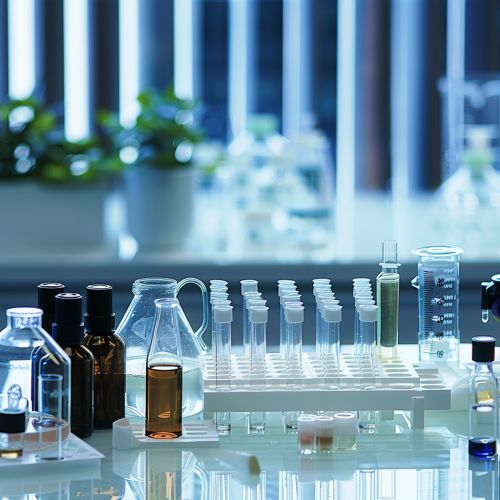Cosmetics testing
Overview
Cosmetics testing refers to the scientific methods employed to assess the safety and efficacy of cosmetic products. This process is crucial to ensure that these products are safe for human use and deliver the promised benefits. The field of cosmetics testing is vast, encompassing various disciplines such as chemistry, biology, toxicology, and dermatology.


History
The history of cosmetics testing can be traced back to ancient times when people started using natural substances for beautification purposes. However, the formal practice of testing cosmetics for safety and efficacy began in the 20th century with the advent of modern scientific methods. The need for such testing was further emphasized with the introduction of synthetic ingredients in cosmetic products, which raised concerns about potential health risks.
Types of Cosmetics Testing
Cosmetics testing can be broadly classified into two categories: safety testing and efficacy testing.
Safety Testing
Safety testing is conducted to ensure that a cosmetic product is safe for human use. It includes various tests such as:
- Skin Irritation and Sensitization Testing: This test is performed to check if the product causes any skin irritation or allergic reactions. It involves applying the product on the skin and observing for any signs of redness, swelling, or inflammation.
- Eye Irritation Testing: This test is conducted to assess if the product causes any irritation to the eyes. It is particularly important for products that are intended to be used around the eyes, such as eye makeup and eye creams.
- Toxicity Testing: This test is performed to evaluate the toxicity of the product. It involves analyzing the product's ingredients and their potential effects on the body.
Efficacy Testing
Efficacy testing is conducted to assess if a cosmetic product delivers the promised benefits. It includes tests such as:
- Performance Testing: This test is performed to check if the product works as claimed. For example, a moisturizer may be tested for its ability to hydrate the skin, or a sunscreen may be tested for its sun protection factor (SPF).
- Stability Testing: This test is conducted to check the product's stability under various conditions such as heat, light, and humidity. It helps to determine the product's shelf life.
- Consumer Testing: This test involves using the product by a group of people and collecting their feedback. It helps to understand the product's effectiveness and acceptability among consumers.
Regulatory Aspects
Cosmetics testing is regulated by various authorities worldwide to ensure the safety and efficacy of cosmetic products. In the United States, the Food and Drug Administration (FDA) oversees the regulation of cosmetics. In the European Union, the European Medicines Agency (EMA) is responsible for regulating cosmetics. These regulatory bodies set the guidelines for cosmetics testing and ensure that the products meet the required safety and efficacy standards.
Ethical Considerations
The practice of cosmetics testing has been a subject of ethical debate, particularly regarding the use of animals in testing. Animal testing involves testing cosmetic products or their ingredients on animals to assess their safety and efficacy. However, this practice has been criticized for its cruelty and inhumanity. As a result, many countries have banned animal testing for cosmetics, and alternative methods such as in vitro testing and computer modeling are being explored.
Future Trends
The field of cosmetics testing is continually evolving with advancements in science and technology. Future trends in this field may include the increased use of alternative testing methods, personalized cosmetics testing, and the integration of artificial intelligence and machine learning in testing procedures.
